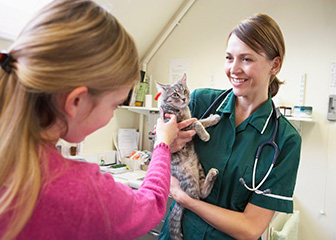Summary

| Quick Facts: Veterinary Technologists and Technicians | |
|---|---|
|
$29,710 per year
$14.28 per hour |
|
| Associate’s degree | |
| None | |
| None | |
| 80,200 | |
| 52% (Much faster than average) | |
| 41,700 | |
What Veterinary Technologists and Technicians Do
Veterinary technologists and technicians perform medical tests under the supervision of a licensed veterinarian to treat or to help veterinarians diagnose the illnesses and injuries of animals.
Work Environment
Veterinary technologists and technicians work in private clinics, laboratories, and animal hospitals. Their jobs may be physically or emotionally demanding. Many technologists and technicians may have to work evenings, weekends, or holidays.
How to Become a Veterinary Technologist or Technician
Veterinary technologists and technicians must complete a postsecondary program in veterinary technology. Technologists need a 4-year bachelor’s degree, and technicians need a 2-year associate's degree. Typically, both technologists and technicians must take a credentialing exam and must become registered, licensed, or certified, depending on the state.
Pay
The median annual wage of veterinary technologists and technicians was $29,710 in May 2010.
Job Outlook
Employment of veterinary technologists and technicians is expected to grow 52 percent from 2010 to 2020, much faster than the average for all occupations. Job opportunities are expected to be excellent, particularly in rural areas.
Similar Occupations
Compare the job duties, education, job growth, and pay of veterinary technologists and technicians with similar occupations.
O*NET
O*NET provides comprehensive information on key characteristics of workers and occupations.
Contacts for More Information
Learn more about veterinary technologists and technicians by contacting these additional resources.









